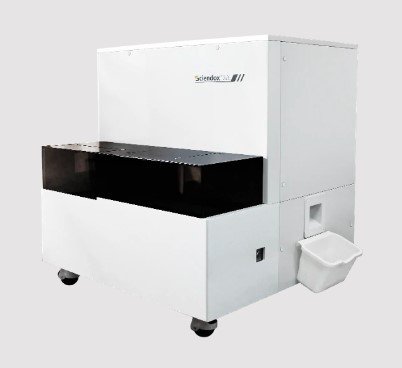Ensuring Authenticity of Medical Supplies in the US Healthcare System: Challenges and Solutions
Summary
- The importance of ensuring the authenticity of medical supplies in the healthcare system
- The role of regulatory agencies in monitoring and preventing counterfeit products
- The challenges and solutions in preventing counterfeit medical supplies from entering the US healthcare system
Introduction
Medical labs and phlebotomy clinics across the United States rely on a steady supply of high-quality medical supplies to provide accurate and reliable healthcare services. However, the rise of counterfeit medical supplies, particularly those manufactured in countries like China, poses a significant threat to the integrity of the healthcare system. In this article, we will explore the measures in place to prevent counterfeit medical supplies from entering the US healthcare system through the manufacturing process in China.
The Importance of Authenticity in Medical Supplies
Ensuring the authenticity of medical supplies is crucial for the safety and efficacy of healthcare services. Counterfeit medical supplies can lead to incorrect diagnoses, ineffective treatments, and even life-threatening consequences for patients. In the context of medical labs and phlebotomy clinics, using counterfeit supplies can compromise the accuracy of Test Results and jeopardize the quality of patient care.
Regulatory Agencies and Oversight
Regulatory agencies play a vital role in monitoring and preventing counterfeit medical supplies from entering the US healthcare system. The Food and Drug Administration (FDA) is responsible for regulating the manufacturing, distribution, and marketing of medical devices and supplies in the United States. The FDA works closely with international partners, including regulatory authorities in China, to ensure that medical supplies meet quality and safety standards.
Challenges in Preventing Counterfeit Medical Supplies
Despite the efforts of regulatory agencies, preventing counterfeit medical supplies from entering the US healthcare system remains a challenge. The global Supply Chain for medical supplies is complex, with multiple points of contact and opportunities for counterfeit products to infiltrate the market. Additionally, manufacturers of counterfeit medical supplies are becoming increasingly sophisticated in their production methods, making it difficult to detect fraudulent products.
Solutions to Prevent Counterfeit Medical Supplies
Addressing the issue of counterfeit medical supplies requires a multi-faceted approach that involves collaboration between regulatory agencies, manufacturers, and Healthcare Providers. Some key solutions to prevent counterfeit medical supplies from entering the US healthcare system include:
- Enhanced Regulatory Oversight: Regulatory agencies should strengthen their oversight of medical supply chains, including conducting inspections of manufacturing facilities and implementing stricter Quality Control measures.
- Supplier Verification Programs: Healthcare Providers should implement supplier verification programs to ensure that they are sourcing medical supplies from reputable and reliable manufacturers. These programs can include thorough vetting processes and audits of suppliers' manufacturing practices.
- Public Awareness Campaigns: Education and awareness initiatives can help Healthcare Providers and patients identify counterfeit medical supplies and report suspicious products to regulatory authorities. By raising awareness about the risks of counterfeit supplies, these campaigns can empower individuals to take action against fraudulent practices.
Conclusion
Preventing counterfeit medical supplies from entering the US healthcare system is a complex challenge that requires collaboration and vigilance from all stakeholders. By implementing enhanced regulatory oversight, supplier verification programs, and public awareness campaigns, we can work towards safeguarding the integrity of the healthcare system and ensuring the safety and well-being of patients.

Disclaimer: The content provided on this blog is for informational purposes only, reflecting the personal opinions and insights of the author(s) on the topics. The information provided should not be used for diagnosing or treating a health problem or disease, and those seeking personal medical advice should consult with a licensed physician. Always seek the advice of your doctor or other qualified health provider regarding a medical condition. Never disregard professional medical advice or delay in seeking it because of something you have read on this website. If you think you may have a medical emergency, call 911 or go to the nearest emergency room immediately. No physician-patient relationship is created by this web site or its use. No contributors to this web site make any representations, express or implied, with respect to the information provided herein or to its use. While we strive to share accurate and up-to-date information, we cannot guarantee the completeness, reliability, or accuracy of the content. The blog may also include links to external websites and resources for the convenience of our readers. Please note that linking to other sites does not imply endorsement of their content, practices, or services by us. Readers should use their discretion and judgment while exploring any external links and resources mentioned on this blog.
